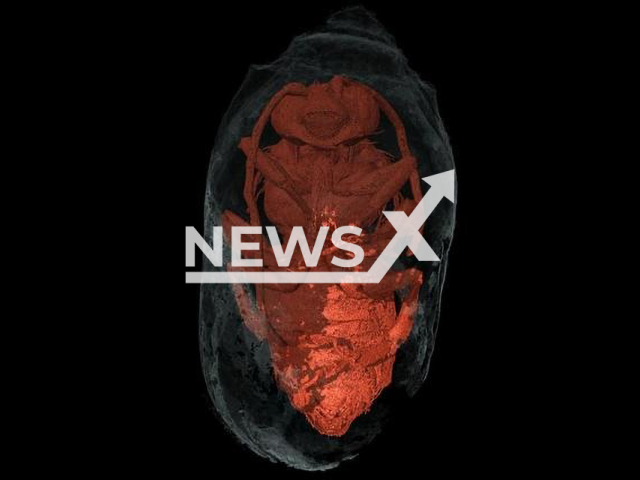 Picture shows X-ray micro-CT of a male Eucera inside its nest, undated. Scientists hope to find out more about bees' survival strategies after discovering 3,000-year-old mummified solitary bee larvae preserved as a result of a cataclysmic event that even destroyed the bacteria that would have normally led to their decay. Note: Licenced photo. (Fernando Muñiz/Newsflash)
Picture shows X-ray micro-CT of a male Eucera inside its nest, undated. Scientists hope to find out more about bees' survival strategies after discovering 3,000-year-old mummified solitary bee larvae preserved as a result of a cataclysmic event that even destroyed the bacteria that would have normally led to their decay. Note: Licenced photo. (Fernando Muñiz/Newsflash)
Copyrights: Fernando Muñiz/Newsflash
12 October 2023
A 3,000-year-old colony of hundreds of mummified bee larvae preserved in perfect condition are being studied by scientists to unlock the secrets of climate survival. The larvae, found in Portugal, would normally have been eaten away by bacteria. But an ecological disaster that wiped out the...